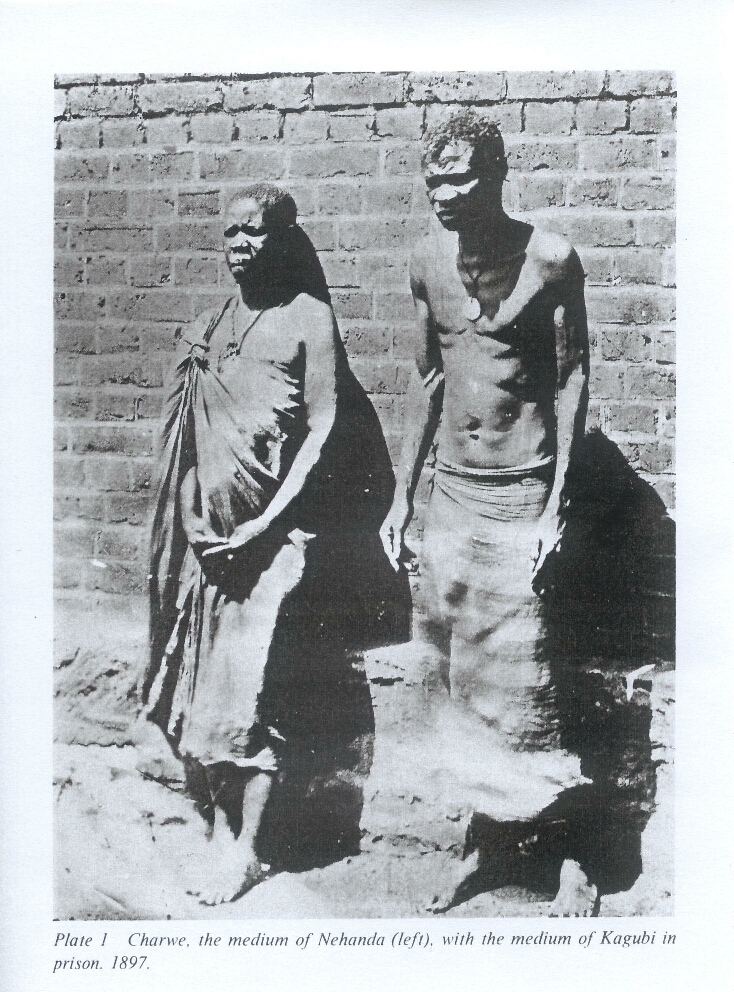Nehanda Charwe Nyakasikana, also known as Mbuya Nehanda, was a Svikiro or spirit medium of the Zezuru Shona people. She was also one of the leaders of the Chimurenga Uprising in the 1890s against the British South Africa Company under the leadership of Cecil John Rhodes, which was attempting to gain control of much of Southern Africa.
Charwe Nyakasikana was born in 1840 in the Chishawasha district of central Mashonaland. She was the daughter of a man named Chitaura, who was the younger son of Shayachimwe, the founder of the Hwata dynasty in the upper Mazowe Valley in the late eighteenth century. She married and had two daughters and a son, but her husband’s name has not survived.
In 1890, British colonists under the flag of the British South Africa Company (BSAC) invaded Mashonaland (in present-day Zimbabwe). They confiscated the land and livestock of the indigenous people living there in the company’s attempt to find gold. The British government had granted the company exclusive mining rights, and BSAC imposed forced labor and taxes on the local families. This scenario triggered an uprising known as the “Chimurenga” (Liberation War), a military campaign that began in March 1896 to drive the British out of the region. A crucial aspect of this first uprising was its strong connection to religion and traditional religious leaders of local communities.
Nehanda Charwe Nyakasikana was a Shona spiritual leader and a medium of an ancestral spirit known as mhondoro. The mhondoro were among the most powerful spirits in the local tradition. Together with the mediums of the other two mhondoro, Mukwati in Matabeleland and Sekuru Kaguvi in western Mashonaland, Nehanda organized and led the resistance of her people until she was captured.
The first Chimurenga Uprising lasted until late 1897 when the Shona and Ndebele peoples were defeated after running out of supplies. Nehanda was charged with the murder of H.H. Pollard, a European commissar known for his cruelty. Her trial began in March 1898, and the following month, she was found guilty and sentenced to death. Before she was executed, she announced to the British that her body would be resurrected to fight a second and, this time, a successful battle against them.
It is believed that Nehanda’s words, “My bones will rise again,” foreshadowed the second Chimurenga Uprising of 1964-1979, which culminated in the independence of the nation of Zimbabwe. Nehanda’s heroism became an important source of inspiration for the nationalist liberation struggle in the 1960s and 1970s. Her name is now usually prefixed with the respectful title Mbuya or Grandmother. The maternity ward at Parirenyatwa Hospital on the University of Zimbabwe campus in Harare is named after her. In May 2021, a statue of Mbuya Nehanda was unveiled in Zimbabwe’s capital, Harare, on Julius Nyerere Way, where the road meets Samora Machel Avenue.

